

Double-Sided Design Solves Painfully Universal USB Problem. Sometimes something begs for a simple solution.
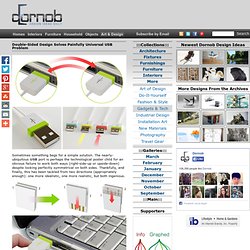
The nearly-ubiquitous USB port is perhaps the technological poster child for an obvious failure to work both ways (right-side-up or upside-down) despite looking perfectly symmetrical on both sides. Thankfully, and finally, this has been tackled from two directions (appropriately enough): one more idealistic, one more realistic, but both ingenious. Ma Yi Xuan is a student designer who has solved the problem in theory, and in reality by UltraTek‘s new Flipper. These answers have been a long time coming. This author, for example, has bend more than one USB plug (and port), though fortunately only destroyed one to date.
In the student version, there is a piece on either side of the interior that slides out of the way to reveal a data connection – which half moves depends on what way the plug is placed into the accepting slot. DIY LED Steps: Motion-Sensing Staircase Illuminates Itself. Plant-Based Home Purifier Accelerates Clean Air Circulation. Science still has few safer, simpler and cleaner alternatives to plants when it comes to interior (or exterior) air purification on small (or large) scales – hence this idea, which multiplies the capacity of a typical house plant to clean air by an average of one thousand percent.
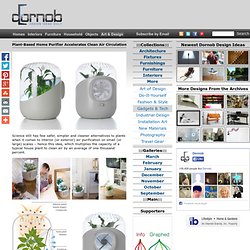
A mechanical fan speeds up the air that circulates inside of this elemental plastic pod, driving the process of detoxification to move toxins more quickly through leaves, roots and soil into a collection basin below. Titled Andrea, the device absorbs toxic gasses from everyday home and office surroundings better than carbon filters. Depending on the substance, it works between 350% and 4400% more efficiently than comparable artificial strategies. Biochemical by design, it operates free of ozone, quiet inside and with low power requirements. It works with most any household plant, too, so you can pick what fits your style and don’t have to worry about replacement filters either.
Flipping Nifty: Flexible Folding Plug for Interior Wall Sockets. Until electricity is entirely wireless, the question of how to deal with dense plugs will continue to nag at designers – this solution, while nifty, poses a new problem while trying to solve the old one.
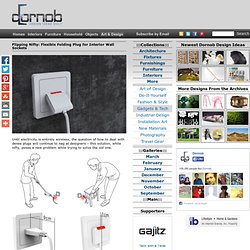
There are angled, bent and flush-fitting solutions, but when you go to change configurations (like standing up from a low seat with your laptop) your cord may have other ideas. Huang Guanglei‘s vision for this flexing plug looks perfect, but in addressing the issue of mobility it creates a problem of power. Specifically, it is designed to flip up and down not just to accommodate movement but also to turn on and off. This last tweak is neat insofar as it results in an adjustable dimmer switch for lights, but less functional for something that uses continuous power to run. Mobile Smart Phone Grocery Shopping in Subway Stations. Imagine waiting for the train while picking out your groceries from a display case filled with products identical in size, scale and color to really grocery store shelves.
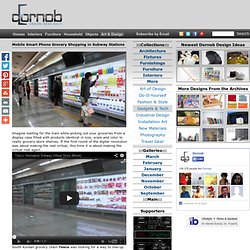
If the first round of the digital revolution was about making the real virtual, this time it is about making the virtual real again. South Korean grocery chain Tesco was looking for a way to one-up their major competitor – impossible to do in terms of physical shops due to a lack of actual stores; hence, they turned toward the world wide web with a combination of mobile phone and QR code technologies. Using smartphones, shoppers can browse the isles during time normally spent idle anyway on their way to or from work.
Their purchased products are then delivered by the store, waiting for them when they get home and ready to be put right into the kitchen cabinets, refrigerator or freezer. See-Through, Touch-Screen Tablet Renders Interiors in 3D. It has taken from hundreds to thousands of years for architects and designers to perfect the art of translating from two-dimensional images to the three-dimensional world and back again.
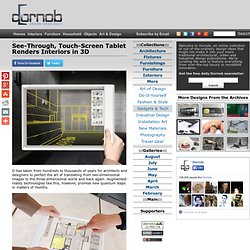
Augmented-reality technologies like this, however, promise new quantum leaps in matters of months. A see-through touch screen will allow users of the (still pre-production) IRIS Tablet to overlay physical spaces with digital renderings ranging from plans and sections to highlighted perspectives, all paired for easy identification of locations and angles in multiple dimensions. A combination of geo-positioning and pattern recognition help the device recognize its own stance within a structure, projecting too-be-added components onto the screen for an up-close-and-personal look at proposed renovations and additions.
The see-through surface is more than a transparent window, it is a basis for modeling, exploring and interacting with intangible ideas and unrealized futures.